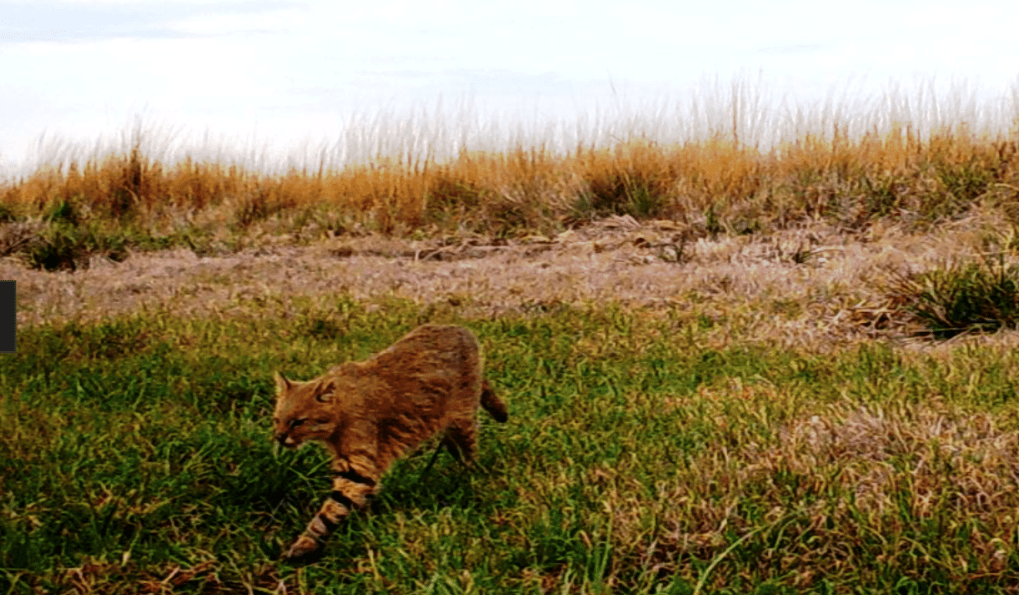On July 24, 2023, it was announced that researchers have discovered a rare wild cat in the restored grasslands of northeast Argentina.
The cat’s situation is so critical that many experts consider it to be the most endangered small feline species on the planet.
The images that they captured are the first evidence in a decade of its presence in the region.
A study published in the August, 2023 edition of Journal for Nature Conservation documents the discovery of Muñoa’s Pampas cat in the 1.8-million-acre Great Iberá Park, composed of Iberá National Park and Provincial Parks.
As the last refuge for this species, the park’s restored grasslands are crucial to its long-term conservation.
Researchers from Argentina’s National Scientific and Technical Research Council (known by the Spanish acronym CONICET), Iberá National Park and Rewilding Argentina undertook an extensive camera trap survey which revealed the surprising presence of Muñoa’s Pampas cat (Leopardus munoai).
The species was—until now—restricted to the open savannas and grasslands of Southern Brazil, Uruguay and Northeast Argentina.
Researchers employed 2067 camera-trap stations to obtain four unique records of the species. Prior to the study, there have been only three documented sightings of Muñoa’s Pampas cat in Argentina, including two individuals hit by vehicle traffic.
Recently, the Pampas cat was redesignated as five separate species based on their morphological and molecular differences.
Muñoa’s Pampas cat, also known as the Uruguayan Pampas cat, was named in honor of the Uruguayan zoologist Juan Ignacio Muñoa.
Once distributed in the subtropical grasslands of the Argentine provinces of Entre Ríos and Corrientes, in Uruguay and in the extreme south of Brazil, Muñoa’s Pampas cat largely disappeared with the encroachment of large-scale agriculture, ranching and deforestation.
According to Sebastian Di Martino, Director of Conservation for Rewilding Argentina, the offspring of Tompkins Conservation, the presence of this very rare feline reveals the exceptional value of the Iberá grasslands, which have allowed other rare species to rebound, such as the maned wolf, marsh deer and the strange-tailed tyrant.
The results of the study highlight the importance of expanding all grasslands restoration efforts.
Ongoing restoration efforts in the Iberá wetlands have also propelled the regional recovery of many species, including top predators like the jaguar.
Thanks to the study’s findings, Brazilian and North American scientists are joining efforts to protect and further study Muñoa’s Pampas cat.
Great Iberá Park is located in Corrientes Province in northeastern Argentina, and comprises the Iberá Provincial Park, of some 600,000 hectares, and the Iberá National Park, of 158,000 hectares.
It was donated by Tompkins Conservation and Rewilding Argentina to the Argentine state. The wetlands occupy the center of a great subtropical plain surrounded by Paraná Atlantic forest, Chaco forest, open grasslands and thorny shrublands.
In addition to being the last refuge for Muñoa’s Pampas cat, Iberá is home to the world’s largest population of the endangered collared peccary and the second largest population of marsh deer, as well as being a fundamental refuge for endangered species such as maned wolf, pampas deer and grassland birds rendered nearly extinct in Argentina due to the expansion of large-scale agriculture.
Photo courtesy of CONICET.

